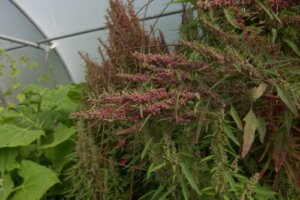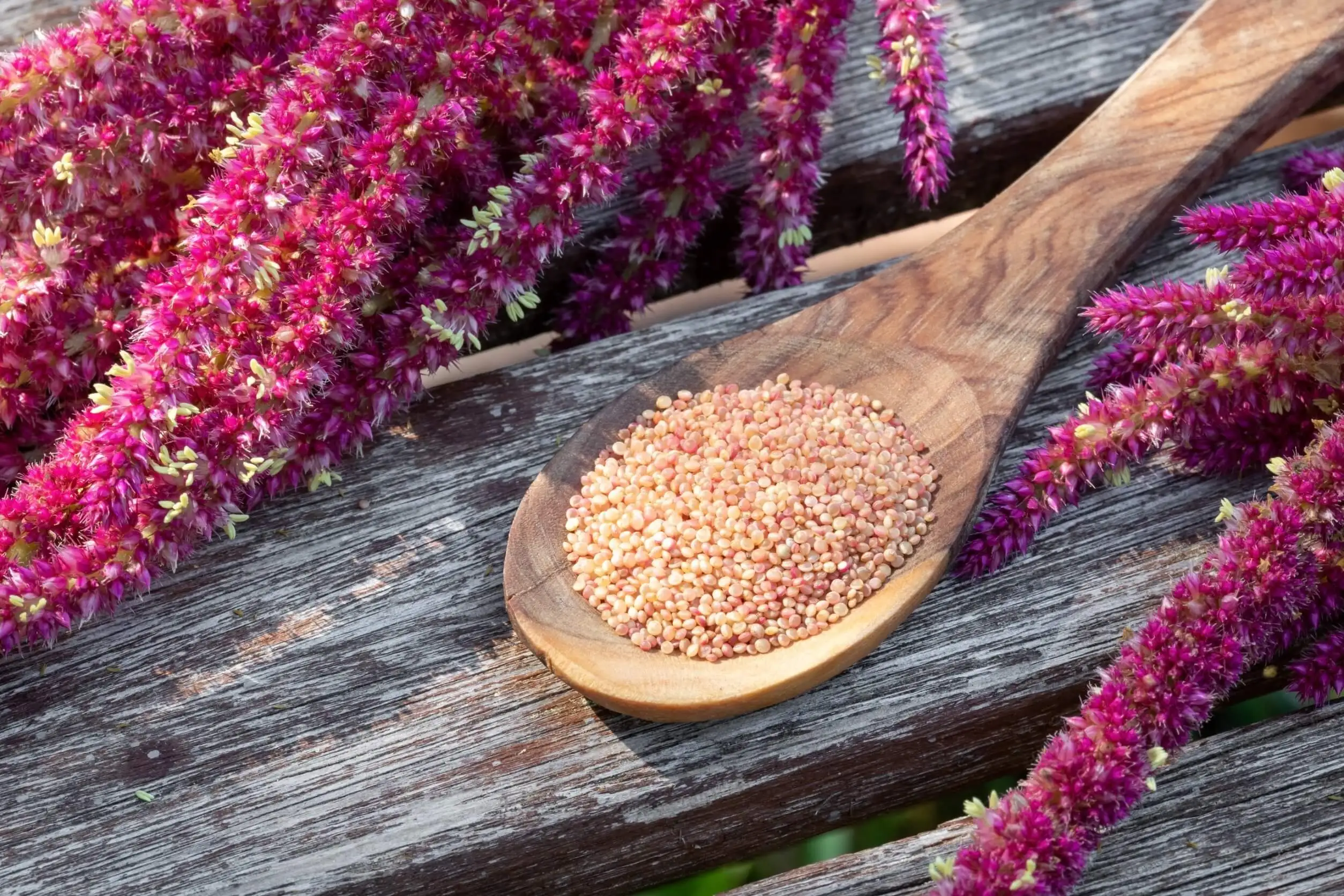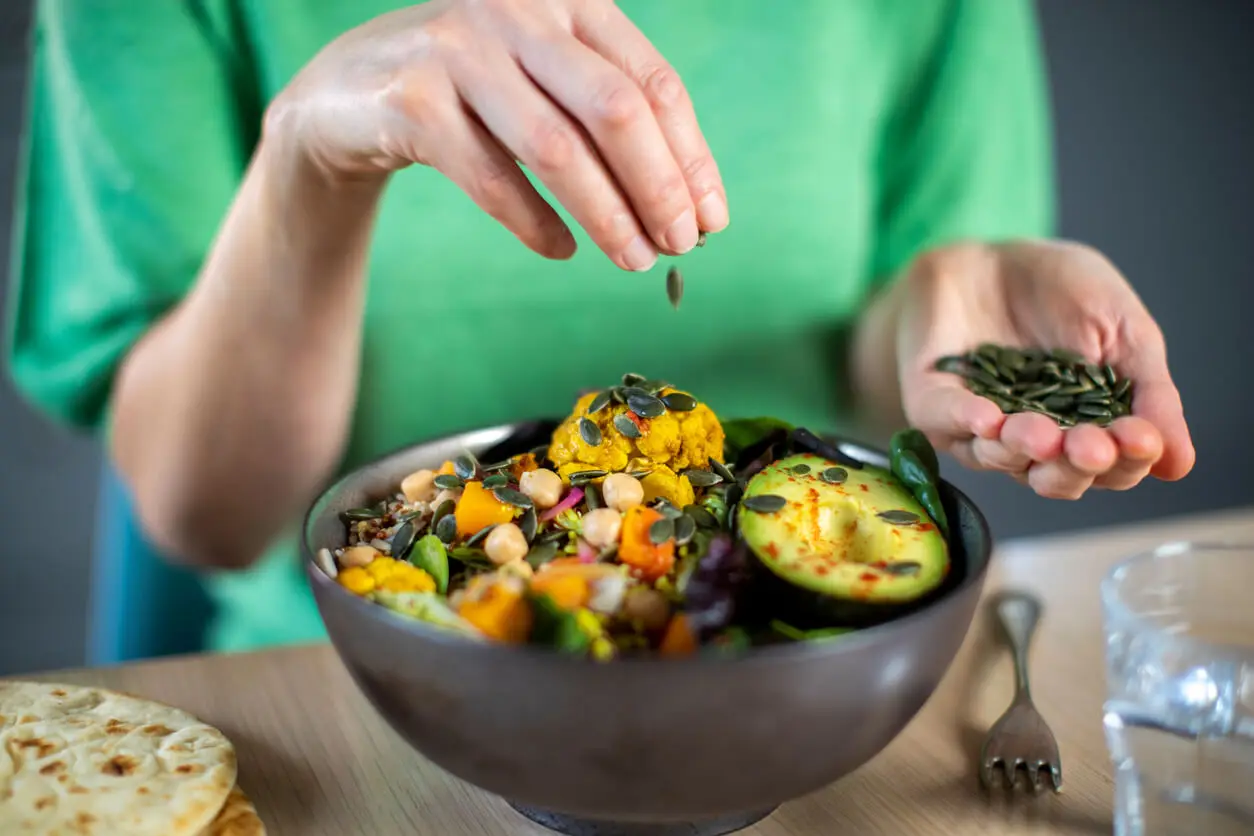What Are Huauzontles and What Are Their Benefits?


Written and verified by the nutritionist Maria Patricia Pinero Corredor
Perhaps for many, the name Huauzontles (Chenopodium spp.) isn’t at all familiar, but for others, they know that this is a vegetable similar to amaranth that’s eaten green and has been eaten for centuries in Mexico. The Food and Agriculture Organization of the United Nations (FAO) defines it as a “forgotten crop” since it was part of the diet of pre-Hispanic cultures.
Huauzontles are considered a pseudo-grain because of their uses and properties that are so similar to those of amaranth. Like amaranth and quinoa, they stand out for their high levels of protein and essential amino acids, as well as polyunsaturated fat.
If you want to know more about the benefits that characterize this interesting pseudo-grain, you should keep reading. Maybe you will incorporate them into your daily diet!
We think you may also enjoy reading this article: The Nutritional Value of Red Fruit and Vegetables
What are huauzontles?
Huauzontles are a type of quelites – that is, plants whose leaves, tender stems, and immature sprouts are consumed as a vegetable. They have similar characteristics to quinoa and amaranth but are eaten green.
Its name derives from Nahuatl huauhtzontli, which is broken down into huauhtli (“weed”) and tzontli (“hair”)- that is, hair of the weed, due to its branched shape.
From a botanical point of view, it belongs to the Chenopodiaceae family. In pre-Hispanic times, it was the fourth most important crop, after corn, beans, and chili. It was so valuable as food that the people used it to pay the Aztec empire.
Huauzontles have the shape of a small elongated tree, with alternate, oval leaves and green flowers in the form of small balls that form long bunches. These flowers are used as food and, less frequently, so are the tender leaves of the plant. The stem and branches are thick but can also be consumed.

Nutrients
The nutritional values of huauzontle have been explained by a group of researchers of Mexican gastronomy. Macronutrients are expressed in grams (g) per 100 grams of the vegetable. In the case of minerals, they’re presented in milligrams (mg) per 100 grams.
- Moisture: 3.8 g
- Ash: 17.3 g
- Protein: 23 g
- Fiber: 16,9 g
- Carbohydrates: 56,8 g
- Lipids: 2.8 g
- Phosphorus: 241 mg
- Magnesium: 464 mg
- Potassium: 1862 mg (53 % of the recommended daily value)
- Calcium: 504 mg (50% of the recommended daily value)
- Iron: 7.1 mg (70% of the recommended daily value)
Among the macronutrients in huauzontles, the highest proportion is carbohydrates, with almost 60%. This is why they’re considered grains. Starch and non-digestible carbohydrates, such as dietary fiber, also stand out.
Protein values are among the highest among vegetables, being higher than quinoa and amaranth. The amino acids found in greater proportion are the two essential ones, called lysine and leucine; and the 2 non-essential ones, aspartic acid, and glutamic acid.
The few lipids contained in this vegetable are of the unsaturated type. These are distributed in 12% of omega-3, 53% of omega-6, and 24% of omega-9.
Micronutrients
Micronutrients are also found in very high proportion. One hundred grams of this vegetable covers 50 % of the recommended daily calcium and 70 % of the iron.
The potassium intake is guaranteed at more than 50 % of what is established, and the magnesium value is so high that it ensures more than 100 % of the daily requirement. As for vitamins, it provides A, E, and B complex vitamins.
Active metabolites in huauzontles
Huauzontles contain more phenolic compounds than flavonoids. According to some experts, their concentrations are very high and have antioxidant activity – even more than lettuce, endives, and spinach.
In fact, researchers determined that huauzontles are the main grain with the highest percentage of inhibition of free radicals. Free radicals cause oxidative stress at the cellular level and, with it, the deterioration of tissues and organs.
The benefits of huauzontles
The benefits are related to their nutritional value and the presence of active metabolites. Let’s take a closer look.
They have antioxidant properties
Some authors have described epidemiological studies in which an inverse relationship between flavonoid consumption and the incidence of chronic diseases is observed. Among these are cardiovascular diseases, we find diabetes, obesity, and metabolic disorders.
They can increase your consumption of fiber
The high value of fiber contained in this type of chelite is favorable for avoiding constipation, since cellulose and hemicellulose regulate the b ody’s digestive mechanics. In addition, soluble type fiber, such as pectins and mucilages, can lower blood cholesterol levels and regulate sugar absorption in the intestine.
Like this article? You may also like to read: The Influence of Food Processing on the Nutritional Value of Foods
They improve the quality of other plant proteins
Huauzontles can be combined with other grains to compensate for lysine and leucine deficiencies in your diet. When this product is mixed in the same dish with cereals, a protein of high biological value and good digestibility is obtained.
They cover the body’s needs for certain minerals
One hundred grams of this vegetable are capable of covering high percentages of the calcium, iron, potassium, and magnesium intake required per day. However, part of these minerals is trapped with phytic acid, a characteristic molecule of vegetables that stores phosphorus.
For this reason, it’s advisable to steam or blanch them, since cooking decreases phytic acid and makes minerals bioavailable.
They can be consumed if you’re intolerant to gluten
Unlike wheat flour and other cereals, huauzontles don’t contain gluten – that is, prolamin-type proteins. Therefore, they’re indicated as a source of vegetable protein in patients with gluten intolerance or sensitivity.

How this grain prepared?
Some care must be taken with huauzontles, as they can be bitter if they’re not prepared properly. The bitterness is due to the presence of substances called saponins, which are eliminated with the cooking water for 2 or 3 minutes. The water should be thrown away after washing the product.
In Mexican cuisine, these grains are used in stews, covered with flour or fried with little oil, in stuffing, salads, broths, tacos, mole, and even pizza. They can also be mixed with an egg tortilla for breakfast.
Should we include them as a healthy dish?
Huauzontles have several nutritional benefits that deserve to be included in the list of healthy ingredients. By consuming them, we can cover a good proportion of our body’s calcium, magnesium, iron, and potassium requirements.
In addition, the abundant protein in this grain contains essential amino acids that are absent in many other grains. For this reason, it’s considered a healthy ingredient.
The high contribution of dietary fiber regulates intestinal function, blood sugar, cholesterol, and triglycerides. Huauzontles are also recognized for their antioxidant functions in fighting free radicals.
A serving of between 80 and 100 grams of cooked huauzontles or 1/2 cup a day is ideal.
All cited sources were thoroughly reviewed by our team to ensure their quality, reliability, currency, and validity. The bibliography of this article was considered reliable and of academic or scientific accuracy.
- Delia Castro Lara, Francisco Basurto Peña, Luz María Mera Ovando, Robert Arthur Bye Boettler. Los quelites, tradición milenaria en México. Primera edición. 2011. Disponible en: https://www.gob.mx/cms/uploads/attachment/file/231814/Los_quelites_una_tradicion_milenaria_en_mexico.pdf
- Cortés, Nallely Rosalba & García-Mateos, María & González, Ana & Sahagún-Castellanos, Jaime & Jiménez-Arellanes, Adelina. (2018). Características nutricionales y nutracéuticas de hortalizas de uso ancestral en México. Revista fitotecnia mexicana publ. por la Sociedad Mexicana de Fitogenética. 41. 245-253. 10.35196/rfm.2018.3.245-253.
- Mia Isabelle, Bee Lan Lee, Meng Thiam Lim, Woon-Puay Koh, Dejian Huang, Choon Nam Ong,
- Antioxidant activity and profiles of common vegetables in Singapore,
- Food Chemistry, Volume 120, Issue 4, 2010, Pages 993-1003, ISSN 0308-8146, https://doi.org/10.1016/j.foodchem.2009.11.038. (https://www.sciencedirect.com/science/article/pii/S030881460901348X)
- Toh, J.Y. & Tan, Verena & Lim, Paul & Lim, S.T. & Chong, Mary. (2013). Flavonoids from Fruit and Vegetables: A Focus on Cardiovascular Risk Factors. Current atherosclerosis reports. 15. 368. 10.1007/s11883-013-0368-y.
- Aura González Palomo. TRABAJO DE FIN DE GRADO. ÁCIDO FÍTICO Y SALUD. 2020. Disponible en: https://idus.us.es/bitstream/handle/11441/104122/GONZALEZ%20PALOMO%20AURA.pdf?sequence=1&isAllowed=y
This text is provided for informational purposes only and does not replace consultation with a professional. If in doubt, consult your specialist.








